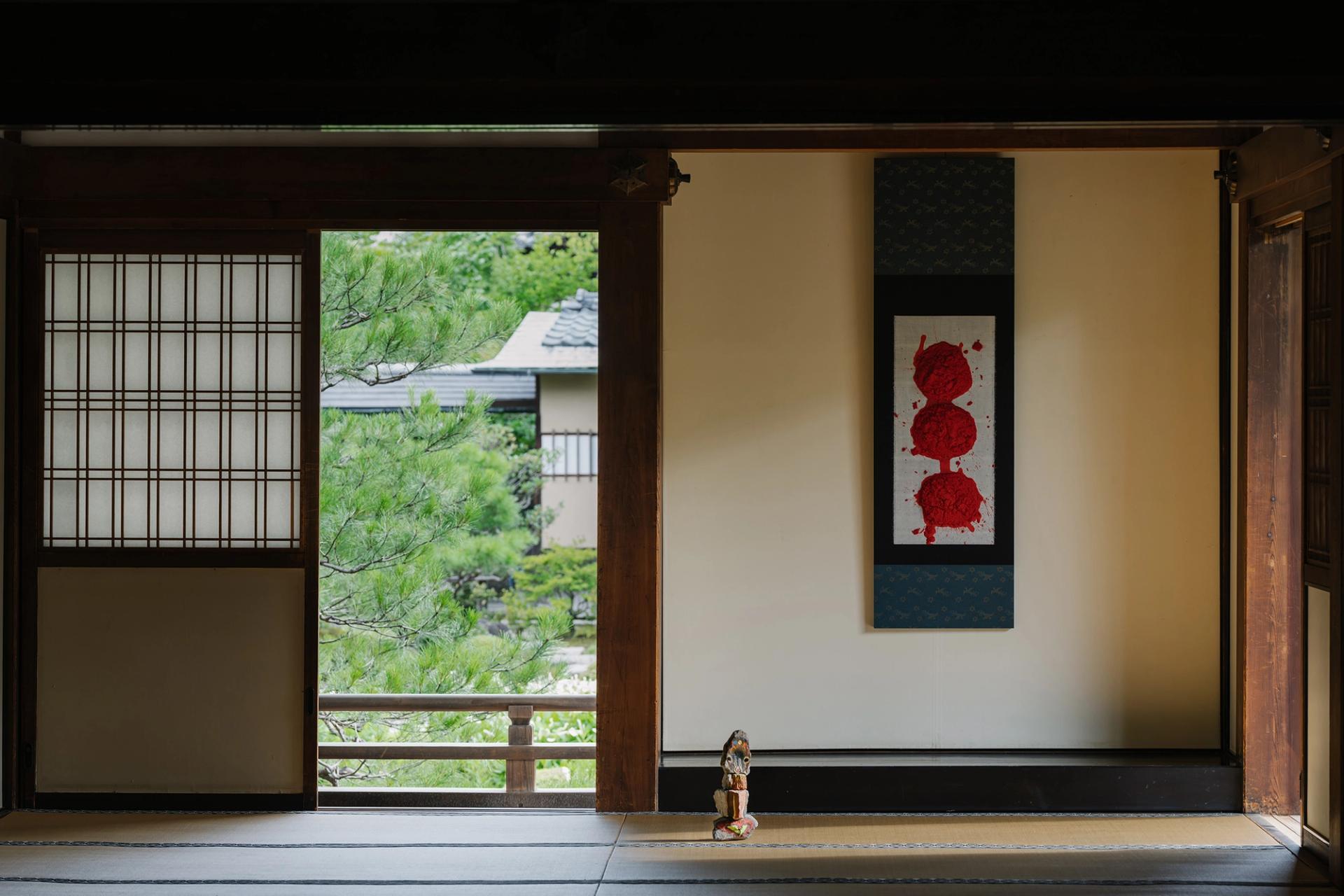It is autumn leaf season in Kyoto, when the vibrant foliage turns the already picturesque Japanese city into a startling masterpiece. As with the arrival of cherry blossoms in the spring, this time of year draws in international crowds and it is at this opportune moment that the Art Collaboration Kyoto (ACK) fair opens its doors (1-3 November).
Now in its fourth edition, ACK offers an interesting alternative model to other international fairs, drawing heavily on its beautiful and historic location. It pairs Japan-based galleries with international galleries to co-present a booth in its Gallery Collaborations section and hosts presentations with direct connections to the city in its Kyoto Meetings section. “Kyoto’s cultural ecosystem and the celebration, preservation and evolution of our city’s cultural traditions are vital to the spirit of ACK,” says Yukako Yamashita, the fair’s programme director, who has roots in Kyoto. “Year after year, we are proud to showcase our commitment to quality in our selection of gallery exhibitors and partner programmes.”
This year ACK has chosen 69 galleries from 19 countries and regions, with 29 international dealers from North and South America, Europe, and the Asia Pacific sharing booths with 27 Japan-based galleries. These include the Tokyo gallery Mitochu Koeki Co. and the London-based dealer Annely Juda Fine Art, which will bring together works by the artist and theorist Kazimir Malevich and the ceramicist Raku Jikinyū XV; and the Tokyo-based gallery SCAI The Bathhouse and the US-based Tanya Bonakdar Gallery, which will present works by the Chinese artist He Xiangyu and the Argentinian artist Analia Saban.

Nonaka-Hill’s booth shared with Kyoto-based Shibunkaku gallery in 2022 Courtesy of ACK, photo by Nobutada Omote
Kyoto Meetings will feature 13 local and international galleries such as Perrotin, Oscaar Mouligne and the Kyoto-based gallery MtK Contemporary Art. The latter will exhibit the Kyoto-based artist Yuichiro Tamura, whose work features built-in artificial intelligence.
The collaborative premise of ACK is refreshing, but is it commercially fruitful? One notable step to make the fair more beneficial for international exhibitors is the fair’s bonded status, allowing dealers to be exempt from the 10% sales tax that would otherwise be imposed pre-sale. “With each edition of ACK, our local community grows and our relationships with overseas galleries strengthen,” Yamashita says.
A case in point is the Los Angeles gallery Nonaka-Hill, a repeat exhibitor at the fair which is now opening a gallery in Kyoto off the back of its success there. “We work with so many artists who live and work in Japan, and we’ve long dreamed of having a gallery branch there, giving the artists a platform in their home country as well as a practical and logistical hub for the gallery’s operations,” says the gallery’s co-founder Rodney Nonaka-Hill. He credits ACK for proving the viability for the gallery’s expansion in Kyoto and notes how much the team learned—both about artists and about local ways of doing business—from its participation in the fair. Nonaka-Hill Kyoto will launch alongside the fair and is housed in a newly renovated, traditional machiya townhouse in the Gion district. Its inaugural exhibition, Arcadia (30 October–21 December), is a solo show of works by the Japanese artist Ulala Imai.

An installation by Izumi Kato and Bosco Sodi at Ryosokuin Zen Temple, Kyoto Mitsuru Wakabayashi Courtesy of Executive Committee, 黙: Speaking in Silence Exhibition © 2024 Bosco Sodi, ©︎ 2024 Izumi Kato
Beyond the fair itself—which is held in the Kyoto International Conference Centre (ICC) and is described by Nonaka-Hill as “a superb specimen of Japanese architecture inflected Brutalism by Sachio Otani”—ACK is presenting an expanded programme of talks and events this year. The theme, set by Yamashita, is titled Resilience—for your own happiness and explores “the vital elements of survival in today’s complex society and the enduring human spirit within Kyoto’s traditional culture, festivals, and craftsmanship”, according to a press release. The Public Program exhibition, curated by the Hong Kong-based platform Arts Collective and held within the ICC building, is called What the map doesn’t say and includes works by Anri Sala, Tomás Saraceno and Wong Ping. Further special exhibitions will take place at historical venues around Kyoto City, including projects by Lucas Arruda, Andreas Erikkson and a collaboration between Izumi Kato and Bosco Sodi.
The collaborative spirit, historic venues and seasonal beauty of Art Collaboration Kyoto feels distant from the well-trodden path of international white cube art fairs. “We’re all (sadly) well acquainted with the fatigue dealers face doing a full schedule of fairs—I still can’t help but advise that overseas galleries do ACK because it’s simply so pleasant!” Nonaka-Hill says. “It’s a spectacular time to be in Kyoto.”
